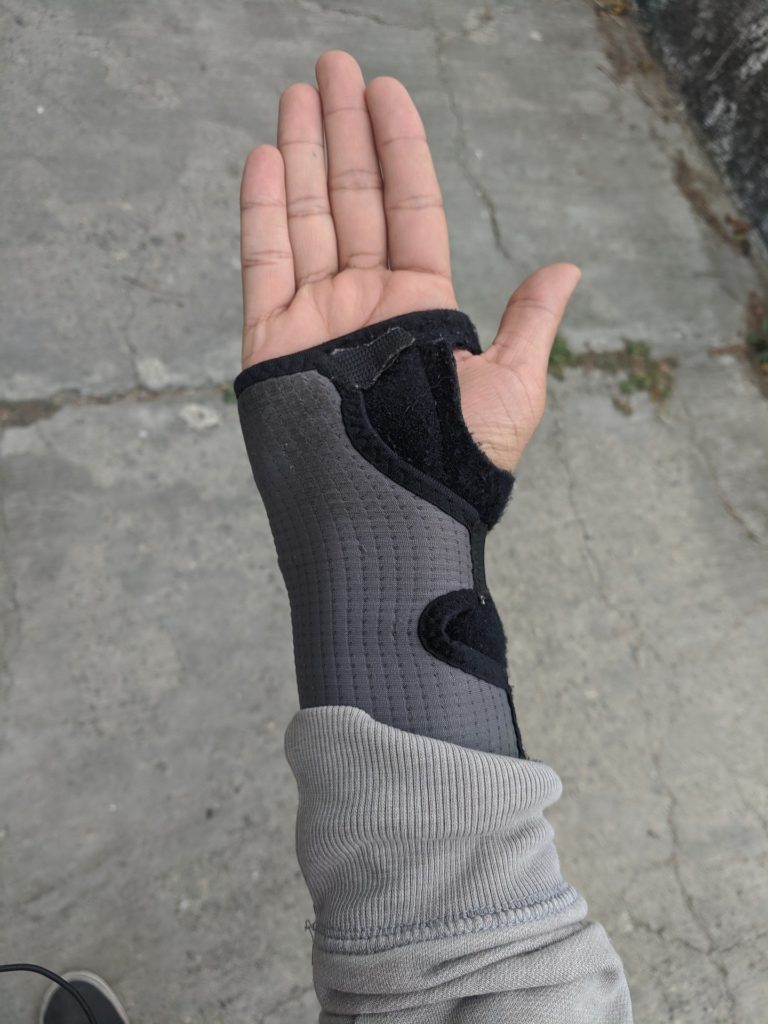
At this year’s European Alliance of Associations for Rheumatology (EULAR) Congress, held June 1 to 4 in Copenhagen, Hospital for Special Surgery (HSS) presented new research related to the treatment and management of rheumatoid arthritis (RA).
The studies focus on the tapering of treatment in patients whose disease is well controlled, real-world outcomes for targeted therapies, assessing the effects of biologic treatments on immune cells from patients with RA, and the underlying mechanisms of arthritis triggered by immune checkpoint therapies used to treat cancer.
What follows are some highlights from the meeting:
Effectiveness of Upadacitinib in the Treatment of Rheumatoid Arthritis: Analysis of 6-Month Real-World Data from the United Rheumatology Normalized Integrated Community Evidence (UR-NICETM) Database
Upadacitinib, an oral Janus kinase (JAK) inhibitor, was approved for the treatment of RA in 2019 after clinical trials suggested that it reduced symptoms and had acceptable side effects. But since that time, few real-world data have been reported on how patients respond to upadacitinib outside of clinical trials. This six-month study looked at outcomes for 140 patients receiving upadacitinib alone and 223 receiving upadacitinib plus conventional synthetic disease-modifying antirheumatic drugs (DMARDs). The investigators, led by HSS rheumatologist Allan Gibofsky MD, JD, MACR, FACP, FCLM, found that overall 46% of patients receiving upadacitinib achieved low disease activity and 14% achieved remission, with better results for patients in the combination therapy group than those who got upadacitinib alone. The effectiveness of upadacitinib was not impacted by prior therapy with a tumor necrosis factor inhibitor or tofacitinib. This study supported the use of upadacitinib in clinical practice, including in patients with prior exposure to advanced therapy.
Authors: Allan Gibofsky, MD, JD, MACR, FACP, FCLM (HSS), Mark E. Pearson, MD (West Suburban Center for Arthritis), Andrew Concoff, MD (United Rheumatology), Anna Shmagel, MD, Patrick Zueger, PhD, Yanna Song, MS, Lauren D. Smith, MD (AbbVie Inc.), Grace C. Wright, MD, PhD (Grace C. Wright MD PC, Association of Women in Rheumatology).
Can Patients with Controlled RA Receiving Any Class of Targeted Therapy with Methotrexate (MTX) Sustain Disease Control after Tapering MTX? A Systematic Review and Meta-Analysis
People with RA frequently wish to taper the use of methotrexate therapy due to its side effects, but there are questions about the best way to do that. Guidelines that recommend tapering methotrexate before tapering biologic DMARDs are not based on direct evidence. In this study, a team of HSS investigators led by rheumatologist Charis F. Meng, MD, and Director of the Inflammatory Arthritis Center Vivian P. Bykerk, MD, FRCPC, conducted a literature search to look at whether patients who are taking the combination of methotrexate and targeted therapy (biologic therapies and JAK-inhibitors) can taper methotrexate and still be in remission from their RA, while continuing their targeted therapies. They identified 10 studies that met their inclusion criteria. These studies included a number of different targeted therapies. Based on their analysis, the team concluded that patients with controlled RA have a high probability of maintaining disease control for at least 18 months after tapering their methotrexate and continuing targeted therapies. They noted that this review may inform patients who are experiencing controlled disease while taking methotrexate in combination with any of a range of targeted therapies and who are struggling with methotrexate-related side effects. However, they concluded longer follow-up studies are needed to confirm the disease will not worsen over time and that patients should be told about this possibility.
Authors: Charis F. Meng, MD, Diviya Rajesh, Deanna Jannat-Khah, DrPH, Omar Bruce, MPH, Bridget Jivanelli, MLIS, Vivian P. Bykerk, BSc, MD, FRCPC (HSS).
Differential Pharmacodynamic Alterations After Treatment with Abatacept or Adalimumab in MTX-Inadequate Responder Patients with Early RA: Whole Blood RNA-Seq Analysis of the Early AMPLE Study
A number of novel agents for RA are now available for treatment, but tools to predict which patients are likely to respond to specific drugs are lacking. To ensure that patients are matched with the best treatment, more research is needed to determine the molecular signatures of these drugs and their mechanisms of action. In this study, part of a Phase 4 trial called Early AMPLE, investigators including HSS Physician-in-Chief and Chair of the Department of Medicine S. Louis Bridges, Jr., MD, PhD, and Director of the Inflammatory Arthritis Center Vivian P. Bykerk, MD, FRCPC, looked at pharmacodynamic changes in patients in response to treatment with either abatacept or adalimumab. The aim was to identify and differentiate the impact of each drug on modulation of immune cells at the molecular level. The investigators performed pharmacodynamic and other analyses for 14,540 protein-coding genes in 664 RNA- Seq samples, with materials collected from 79 patients with RA who were predicted to respond better to abatacept. They found that after treatment, twice as many genes and pathways were significantly altered in the adalimumab arm versus the abatacept arm and that abatacept treatment decreased immune cell cycle gene expression while adalimumab treatment increased expression of these genes. The differential gene expression was seen in genes known to correlate with RA disease activity. The investigators concluded that these findings may explain the greater clinical improvements seen with abatacept versus adalimumab. Because patients in the Early AMPLE study were predicted to respond differentially to abatacept, these findings may be relevant only to this subgroup of patients. These findings warrant further studies to investigate the potential positive correlation between RA-relevant effects and better therapeutic outcomes.
Authors: Chun Wu (Bristol Myers Squibb), Yicong Li (Parexel International), Neelanjana Ray, Michael A. Maldonado, Peter Schafer (Bristol Myers Squibb), S. Louis Bridges, Jr., MD, PhD (HSS), William Rigby (Dartmouth-Hitchcock Medical Center), Vivian P. Bykerk, MD, FRCPC (HSS), Jane Buckner (Benaroya Research Institute at Virginia Mason), Jinqi Liu (Bristol Myers Squibb).
The Probability of Sustaining Rheumatoid Arthritis Remission in Patients Tapering Targeted Therapy Used as Monotherapy: a Systematic Review and Meta-Analysis
A second study led by HSS rheumatologist Charis F. Meng, MD, and Director of the Inflammatory Arthritis Center Vivian P. Bykerk, MD, FRCPC, also used a literature review to look at the effects of tapering drugs for RA in people whose disease is well controlled. This study focused on patients receiving either biologic DMARDs or JAK inhibitors being used alone. A search resulted in five studies that compared tapering of targeted monotherapy (TNF-i, tocilizumab, abatacept, or baricitinib) with continuing therapy or other tapering regimens. A meta-analysis including data from 800 patients found a trend for lower odds of disease remission with targeted therapies versus comparator treatment regimens, but these data were not conclusive. The investigators noted that the lack of trials designed to compare tapering targeted monotherapy to continuing it led to a significant gap in knowledge in an area of research that is increasingly relevant for patients. Their review suggests that stopping targeted monotherapy is unlikely to maintain disease control, but that more gradual tapering schemes, dose reduction, and early treatment of disease may be associated with more successful tapering. More studies are needed to better inform patients, and it is not recommended to stop targeted monotherapy in RA based on this analysis.
Authors: Charis F. Meng, MD, Diviya Rajesh, Deanna Jannat-Khah, DrPH, Omar Bruce, MPH, Bridget Jivanelli, MLIS, Vivian P. Bykerk, MD, FRCPC (HSS).
Less ACPA Epitope Expansion Is Found in ACPA-Positive Immune Checkpoint Inhibitor Arthritis Patients Compared to ACPA-Positive Rheumatoid Arthritis Patients
Immune checkpoint inhibitors (ICI) have improved the treatment of many advanced cancers. However, they can lead to immune-related adverse events, including treatment-induced arthritis. This form of arthritis is similar to RA. About 9% of people with this condition test positive for the anti-citrullinated peptide antibody (ACPA). In RA, the increase in ACPA occurs over the years prior to onset of clinical disease. In this study, led by HSS rheumatologist Nilasha Ghosh, MD, MS, investigators examined the degree of ACPA epitope expansion in patients receiving ICI to determine whether treatment-induced arthritis is similar to early RA, or more suggestive of the pre-clinical phase of disease. The analysis employed clinical data and serum samples from 12 patients with ICI arthritis (ICI-A) as well as from 39 ACPA-positive RA patients. There were a number of differences between the patients in the two groups, including age and smoking history. The investigators reported that, overall, people with ICI-A had lower ACPA titers and targeted fewer ACPA epitopes than people with early RA, suggesting that ICI-A may represent an accelerated model of RA pathogenesis with ICI triggering an early transition from pre-clinical to clinical disease. They noted that sequential sampling and analysis are warranted to further determine how the pathogenesis of ICI-A relates to that of RA.
Authors: Diviya Rajesh, Nilasha Ghosh, MD, MS (HSS), Jessica Kirschmann (Stanford University), Karmela Kim Chan, MD, Deanna Jannat-Khah, Susan M. Goodman, MD, Vivian P. Bykerk, BSc, MD, FRCPC (HSS), William Robinson, MD, PhD (Stanford University), Anne R. Bass, MD (HSS).



